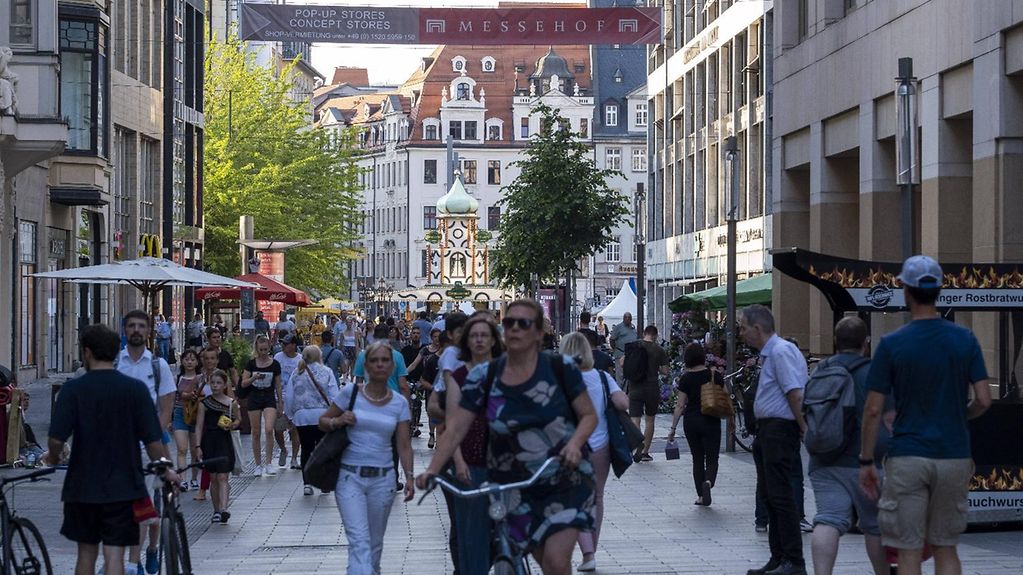Status of German reunification
Since the peaceful revolution more than thirty years ago and German reunification, eastern Germany has made enormous progress in economic terms, says the annual report on the status of German reunification.
3 min reading time

A busy shopping street in Leipzig: wages, salaries and disposable income in eastern Germany are now about 85 per cent of the level in the west of the country
Photo: imago images/Seeliger
Eastern Germany’s economic output rose from 43 per cent of the western level in 1990 to 75 per cent in 2018. Last year gross domestic product (GDP) actually rose by more in the east (1.6%) than in the west (1.4%).
The people are benefitting. Wages, salaries and the disposable income of private households have now reached about 85 per cent of western levels. The difference is actually less if the differences in living costs are factored in.
This is quite astonishing, says Christian Hirte, Federal Government Commissioner for the New Federal States, at the presentation of the report "because in 1989 the GDR’s economy was on its knees".
Labour market trends positive
The unemployment rate in August 2019 was 6.5 per cent. In 2005 it was still 18.7 per cent. The average unemployment over the year was 6.9 per cent, as compared to 4.8 per cent in the west of the country.
The closing gap can also be seen in the difference between the unemployment rates in east and west Germany. At the start of the century the difference was still over ten percentage points, whereas in 2018 it was only 2.1 percentage points.
Growing together - fields of action
The German government conducted a survey for the report. It emerged that 57 per cent of people in the east feel that they are second-class citizens. Only 38 per cent feel that reunification has been successful. Among the under-40-year-olds, i.e. those who only knew the GDR as children if at all, the figure is only 20 per cent. Particular grounds for concern gives the finding that almost half of Germans in the east of the country are dissatisfied with the way democracy is working.
For the German government, the mood in the east is an indication that the process of reunification is confronting the whole of Germany with major challenges. The Cabinet committee "New Federal States", which met after the Cabinet, thus adopted twelve fields of action. They cover a wide spectrum from joint commemoration of the fall of the Berlin Wall and German reunification to establishing comparable living conditions and integrating migrants.
The Commission on Comparable Living Standards has already begun work.
Federal authorities are moving east
More and more federal authorities are moving east: The Federal Trunk Road Authority (Fernstraßen-Bundesamt), the German Centre for Rail Transport Research (Deutsche Zentrum für Schienenverkehrsforschung), the Agency for Disruptive Innovations in Cyber Security and Key Technology (Agentur für Disruptive Innovationen in der Cybersicherheit und Schlüsseltechnologie) and the Forest and Timber Competence Centre (Kompetenzzentrum Wald und Holz) are settling in the east of the country. The federal police force is building a major training centre in eastern Saxony, and another criminal division of the Federal Supreme Court is to be set up in Leipzig.
Since 1997 the German government has reported every year on the status of German reunification. In 2019 the report marks the 30th anniversary year, which begins on 9 November with the celebrations to mark the fall of the Berlin Wall and ends on 3 October 2020 with the 30th anniversary of German reunification.